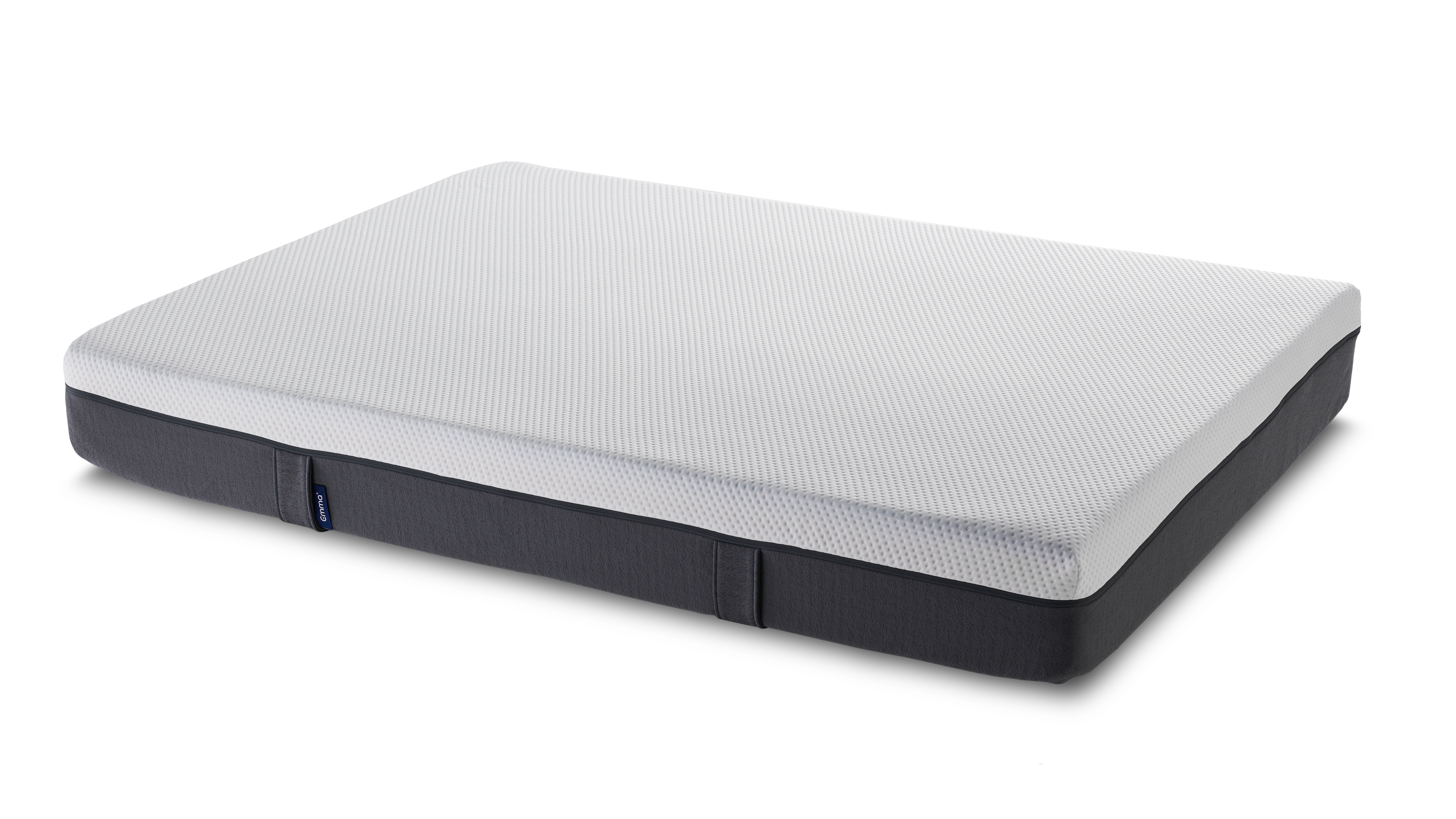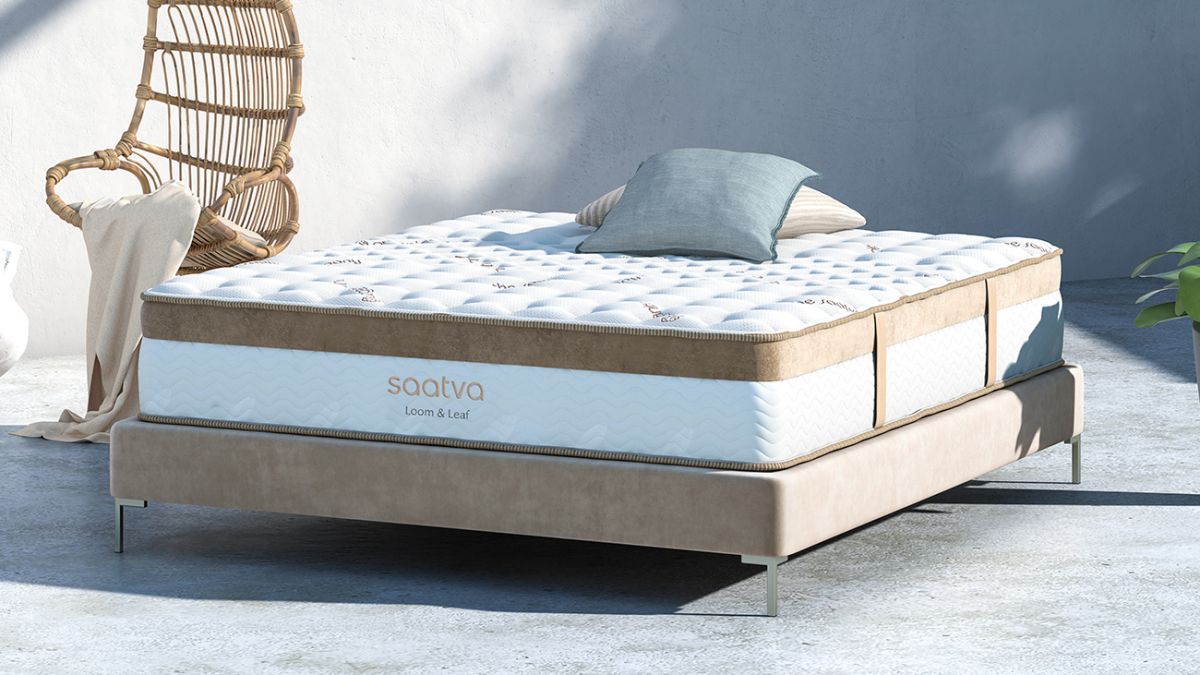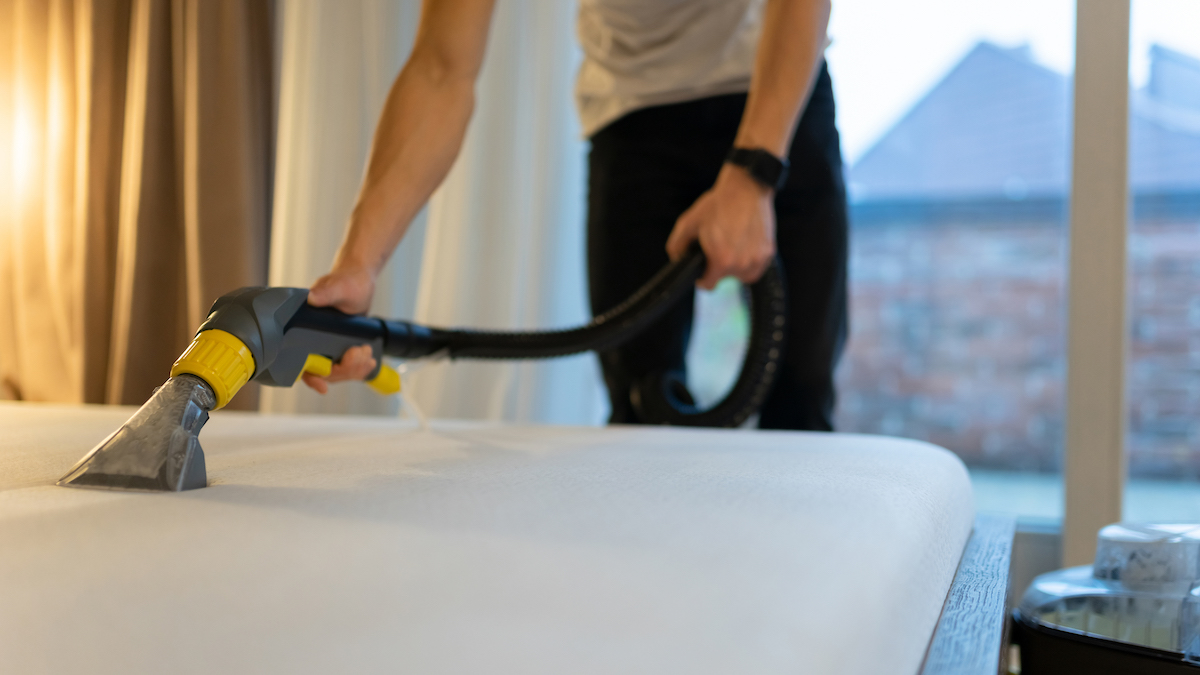We spend nearly a third of our lives in bed, meaning that a supportive and comfy mattress is essential to ensure we get a good night’s slee...
We spend nearly a third of our lives in bed, meaning that a supportive and comfy mattress is essential to ensure we get a good night’s sleep. The best mattresses have an average lifespan of around seven to 10 years (some last much longer). However, how long a mattress lasts depends on various factors, which we look at in detail here.
For example, how you sleep, your body weight, and whether you sleep alone or share a bed each play a part in how long a mattress lasts. Some materials (especially natural latex) are also more durable than others.
Here we look at how long the different types of mattresses should last (on average), and point out some common signs that it’s time to upgrade yours. We’ll also share some basic care tips to help you look after your bed so that it lasts longer (and therefore saves you money).
If you have decided that you’re ready to upgrade, now is the perfect time as we’re seeing the arrival of some fantastic Black Friday mattress deals with impressive savings from many leading sleep brands.
How long does a mattress last: at a glance
Although there are many combinations of materials used in mattresses, the main types are memory foam, hybrid, latex, or innerspring. Each type will have a slightly different lifespan. Here’s a quick run-down of how long each type of mattress lasts on average:
- Latex: 15 to 25 years
- Memory foam: 8-10 years
- Hybrid: 7 to 10 years
- Innerspring: 5 to 7 years
If you’re still sleeping soundly on your bed, but your mattress is over five years old or needs a little boost in terms of comfort or support, consider investing in one of the best mattress toppers. Get the right one and it can give you a few more years of comfortable sleeping on your current bed.
How long does a memory foam mattress last?

Memory foam is pretty durable and you can expect to get around eight to 10 years’ use out from it. This is mainly because there aren’t a lot of materials and components in these mattresses, meaning there’s less to deteriorate and compromise the quality.
Memory foam mattresses generally need to be rotated regularly and must be kept clean and aired. If you start waking up with aches and pains and find that the foam is no longer supporting you and offering pressure relief, it’s time to upgrade.
Sink-in body cradling that’s gone from the sublime to the ridiculous is also a red flag. Watch out for the memory foam discoloring (turning yellow) too, as this is a sign of mattress old age.
How long does a latex mattress last?
Latex is the most resilient of all materials listed here, which means that latex mattresses are the longest-lasting. However, this only applies if you buy a 100% natural latex mattress as these can last from 15 to 25 years. Look for the terms organic, Dunlop or Talalay when considering a latex bed.
Natural latex mattresses often cost more but this is balanced out by the length of time they last for. Blended or synthetic latex has a shorter lifespan of between five to 10 years. It also softens more than natural latex and can produce off-gassing.
How long does a hybrid mattress last?

Hybrid models aren’t as durable as memory foam, but you can still expect several years of use. Some brands, such as Purple and Casper, state that their hybrid mattresses can last as long as 10 years, due to the high-quality materials they’re made with.
With more layers and components in a hybrid than in most other beds on the market, they can be prone to a little premature sagging, hence the slightly shorter average lifespan.
Hybrids can be rotated regularly but should not be flipped unless the manufacturer specifically states otherwise. This is because they generally have a soft top and a sturdy base. You might also void the warranty if you flip a hybrid mattress when it isn’t designed to be flipped.
How long does an innerspring mattress last?
Springs wear down over time and can cause sagging, meaning that innerspring mattresses generally have a lifespan of around five to seven years. But they are extremely popular due to their bounce, comfort and cheaper price tags.
Of course, this can be a false economy as you will end up replacing your mattress more often. If you do want an innerspring bed, it’s worth looking at one with an extra layer of coils combined with a soft pillow top for extra comfort.
Other factors that affect the lifespan of a mattress

Along with the type of mattress you’re sleeping with, there are other factors that will contribute to its lifespan:
Original quality
The quality of your mattress when you originally bought it makes a difference to how long it will last. A very cheap bed is almost certain to wear out before a model made with durable materials.
Body weight and sleep position
Those with a heavier body weight may find their mattress sags more quickly. If you’re of a heavier build, it’s worth looking for a mattress made with stronger, durable materials alongside heavy duty springs.
By the same token, side sleepers put a lot of weight onto the bed in the hip and shoulder regions, causing points in the mattress that sag quicker. Memory foam is the best choice for side sleepers, as they help support and provide pressure relief to the right areas.
Frequency of use
This is somewhat obvious, but a mattress that sits in your guest room and is only used occasionally will last longer than the one you sleep on every night.
How to care for your mattress so it lasts longer
Following some simple tips will help extend the lifespan of your mattress, which will save you money in the long-run as you won't need to replace your bed so often:
1. Rotate it regularly to help keep the surface even and prevent any indents. Although some mattresses can be flipped, make sure you check the manufacturer’s guidelines first. Some mattresses are one-sided only and could be damaged if flipped.
2. Put your mattress on a sturdy base. Most manufacturers recommend what type of bed bases suit their mattresses but, as a general guideline, a box spring, platform, or bed frame with evenly spaced slats should provide decent support.

3. Clean and air your bed frequently to keep it fresh. Many modern mattresses have washable covers that can be removed and machine washed, though some can only be spot-cleaned. Run the vacuum over your mattress and wash your bedding regularly to help prevent the build-up of dust mites, bacteria and sweat.
4. Use a mattress protector at all times. These slip over just like a fitted sheet and help to safeguard your bed from dirt, spills, sweat and bacteria. They are easy to machine wash and dry, and they needn't cost much either.
When should you replace your mattress? Key signs
If you don’t know how old your mattress is, there are other ways to tell if it needs replacing. Some classic signs to look for include how:
- You sleep better on any other mattress
- You wake up frequently throughout the night
- You wake up with aches and pains
- Your mattress is turning yellow due to age
- Your mattress has worn patches, tears, or sinks at the edges
- Your mattress feels saggy and unsupportive
- The slightest movement from your partner wakes you up
- You’ve noticed an increase in allergies or asthma symptoms
What you sleep on makes a big difference to how comfortably you sleep, so it pays to get this one right. A good bed needn’t cost the earth though, so don’t fall into the trap of thinking that the most expensive mattress is better than all others.
For some affordable options, check out our guides to the best Saatva Black Friday mattress sales for hotel luxury for less, or the latest Nectar Black Friday mattress sales for a top-rated budget memory foam bed-in-a-box.
from TechRadar - All the latest technology news https://ift.tt/3kYwIlN
via IFTTT










COMMENTS